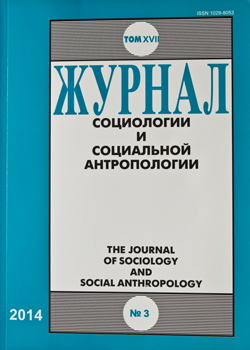Infrastructure, Networks, Negotiations: the Production of Traditional Culture in the Ethnographic Museum
Keywords:
ethnographic museum, sociology of culture, cultural industries, symbolic interactionism, actor-network theory, tradition
Abstract
This article aims to investigate the ethnographic museum as a cultural industry for the production of traditional cultural objects having symbolic meaning: images, knowledge and representations about ethnic cultures. However, the traditional approaches, aiming to see production of culture as any other production process and trying to propose a priori factors influencing production are misleading for describing museum activities. In museums there are different social worlds, knowledge, technologies, exhibitions’ designs. That’s why the model based on symbolic interactionism and actor-network theory is proposed. This model is used to analyze two cases of making internal exhibitions at the Russian Museum of Ethnography (REM) in Saint-Petersburg. Constructing exhibitions is considered as a practice consisting of four main elements: infrastructure, entrepreneurs, negotiations and conventions. These notions taken from two different but close approaches are used to capture the construction of exhibition as a new cultural object establishing new relations between humans, ideas and things. The notions emphasize both contingent nature of exhibition activity and specific organizational and social arrangements that are used to perform common activities. Ready-made exhibitions are boundary objects for different social worlds at REM and beyond. For wider society museum exhibitions are reinterpretations of traditional culture which give access to reality of that culture but only through museum representations and practices.
Published
2014-02-20
How to Cite
Rudenko, N. (2014). Infrastructure, Networks, Negotiations: the Production of Traditional Culture in the Ethnographic Museum . ZHURNAL SOTSIOLOGII I SOTSIALNOY ANTROPOLOGII (The Journal of Sociology and Social Anthropology), 17(3), 134–150. Retrieved from http://jourssa.ru/jourssa/article/view/662
Section
Sociology of Culture

